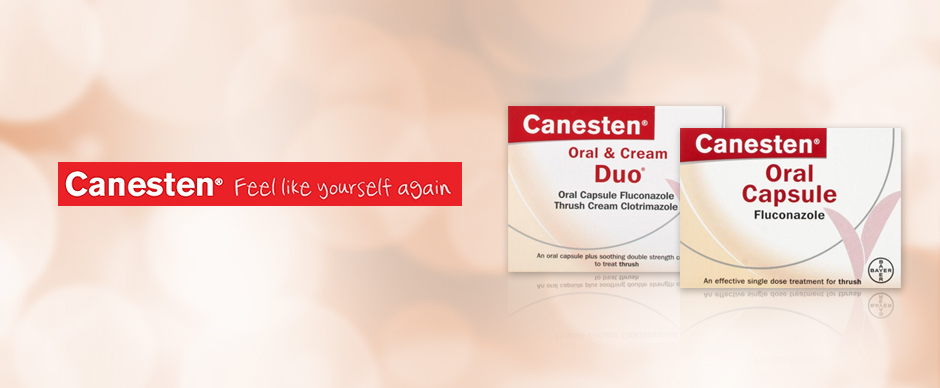
Canesten for Athletes Foot
This article has been medically approved by Pharmacist Sumaiya Patel - GPhC Reg No: 2215078
How to Identify Athlete's Foot?
Around 15% to 20% of people are likely to have Athletes Foot at any one time, hence it is imperative that you know how to recognise it and how to treat it. Athlete's Foot is a skin infection that is caused by microscopic fungus. These microscopic fungi exist in environments that are warm and damp. Such places can be but are not limited to, changing rooms, gym showers, and public swimming pools.
Athlete's Foot is, unfortunately, easy to pick up and can be passed from person to person by action as small as brushing against the skin of someone who's already infected. It's also easy to pick up for those with a habit of walking around barefooted. Feet offer warm and slightly damp conditions where infection can grow, especially between the toes, and once it does it feeds off a substance called keratin--a protein found in nails, skin, and hair.
What Causes Athlete's Foot?
Each of us has bacteria (Corynebacterium minutissimum) as well as a fungus on our skin. This bacteria and fungus are harmless most of the time; however, in some conditions, they can become infected. Athlete's Foot can be passed on by:
- Direct contact: Touching the infected skin of someone with Athlete's Foot and not thoroughly washing your hands after.
- Indirect contact: Picking up the infection from contaminated towels, bedsheets, and clothing.
Once infected, the normally harmless fungus turns into the main infection, and the normally passive bacteria turn into a host of bad smells.
What are the Symptoms of Athlete's Foot?
Athlete's Foot can manifest itself in the following symptoms:
- Blisters
- Burning sensation and inflammation
- Smelly feet (caused by bacteria)
- Itchy feet, especially between toes
- Peeling skin especially between toes
- Cracked skin
- Dry and flaky foot soles
- Red patches on the skin with a white, wet-looking surface
How to Choose the best Canesten Athlete's Foot Treatment?
A good antifungal treatment is the best way to beat an athlete's foot. This is where Canesten athlete's foot treatment steps in to offer you complete foot care and healing. Canesten's Athlete's Foot treatment curing products effectively attack the main types of fungi.
There are four products for treatment and protection in the Canesten Athlete's Foot range:
- Canesten Athlete's Foot Cream: A soothing, effective treatment to help relieve annoying symptoms of athlete's foot. It contains Clotrimazole and is available in multiple sizes. Canesten Athlete's Foot Extra: Once-a-day treatment for athlete's foot that is soothing and effective in relieving symptoms. It contains Bifonazole and is available in multiple sizes.
- Canesten Athlete's Foot Extra Spray: A once-a-day cooling spray that is ideal for use on difficult to reach areas. It contains Bifonazole.
- Canesten Athlete's Foot Powder: A preventative drying powder that should be used to stop re-infection by applying to feet, socks, and shoes. When used in conjunction with Canesten AF Cream or Spray it provides relief from irritation.
In up to one-third of Athlete's Foot cases, a secondary bacterial infection develops on top of the fungal infection. When using products from the Canesten range of Athlete's Foot products always remember that, like any other medication, you should complete the full course of the treatment if you expect to see long-lasting results.
Why use Canesten to cure Athlete's Foot?
- Products from the range are easy to apply
- Powerful enough to penetrate your skin and relieve the symptoms without being unnecessarily harsh on your skin.
- Canesten Athlete's Foot products have been shown to effectively deal with both fungal and bacterial infection.
- When used properly and for their full course, these products prevent secondary infection.
How to Prevent Athlete's Foot?
An ounce of prevention is always better than a pound of cure! If you want your feet to be healthy in the future and avoid the possibility of annoying infections, then here is a list of simple things you can do.
- Keep your feet dry and clean--this should always be at the top of your list.
- Wear flip-flops or sandals in public changing rooms
- Put on clean, dry shoes every day
- Rotate your shoes, especially your gym shoes. Don't wear the same pair every day.
- Take off sweaty shoes once you're finished using them.
- If your shoes are sweaty or wet, take them off and let them dry before wearing them again.
- Give your feet 'breathing' time! Take your shoes off and give your feet a break.
- Wear sandals when you can.
- Wear shocks that are cotton, silk, or wool rather than synthetic, nylon, ones.
- Wear shoes that are made of leather or canvas. These let your feet breathe more than plastic shoes.
- After having a bath or shower, dry your feet carefully, especially between your toes.

